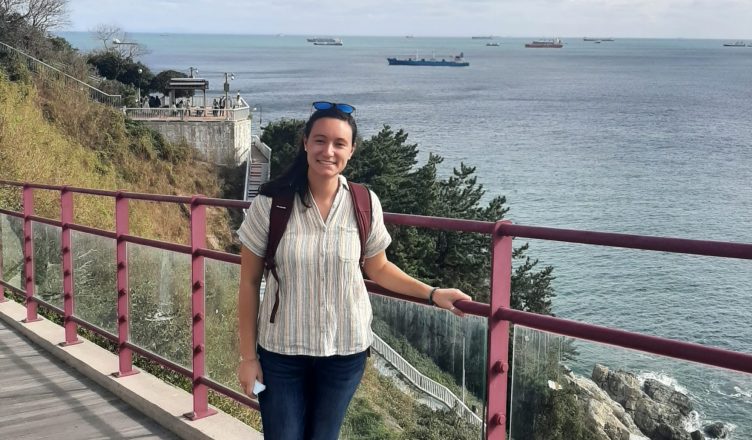In September, I traveled to the 7th International Marine Debris Conference in Busan, South Korea. The IMDC is the world’s longest-running international conference series dedicated to marine litter and plastic pollution. This is the first time the conference had been held outside of the United States.
About 600 people attended in person from countries all over the world from the Americas, Europe and Asia, and several countries from Africa. Several US territories also attended. Over 100 people joined the conference virtually, including our Executive Director, Jen who presented about our community science microplastics program.
Travel
For those of you who are wondering, traveling to the other side of the planet involved one four-hour flight followed by another 15-hour flight to reach the country’s major airport in Incheon.
Once I reached Incheon, I traveled with Laura Ludwig from the Center for Coastal Studies via train and subway for a couple of hours to reach Busan, where their hotel and the BEXCO Conference Center were located.
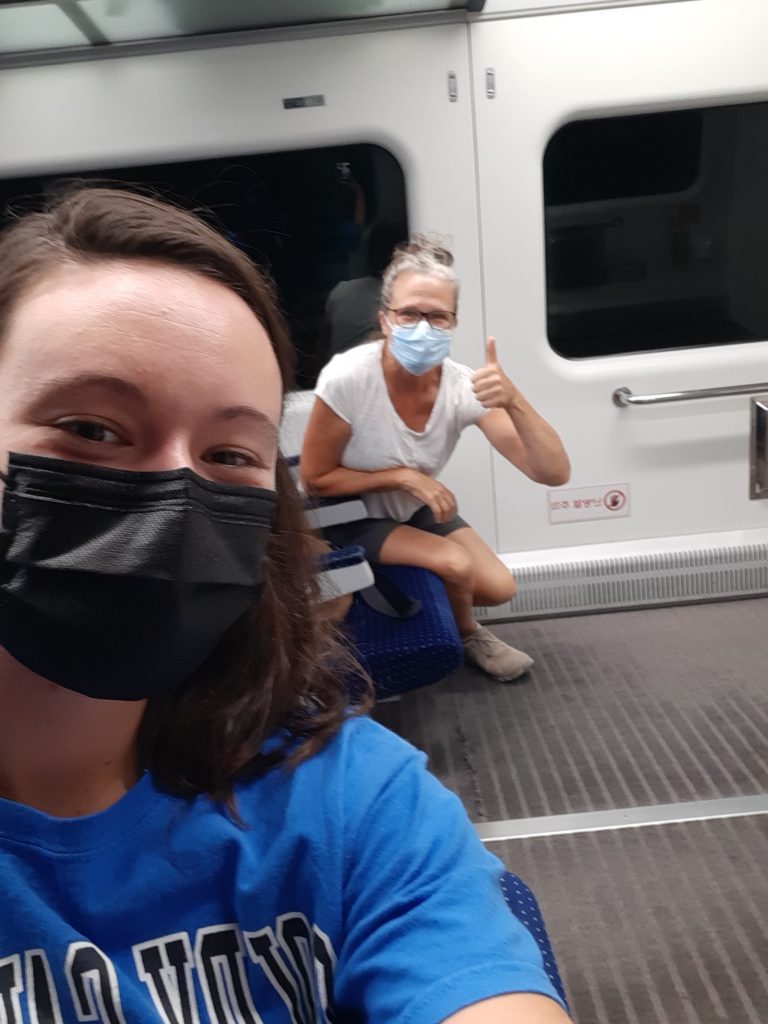
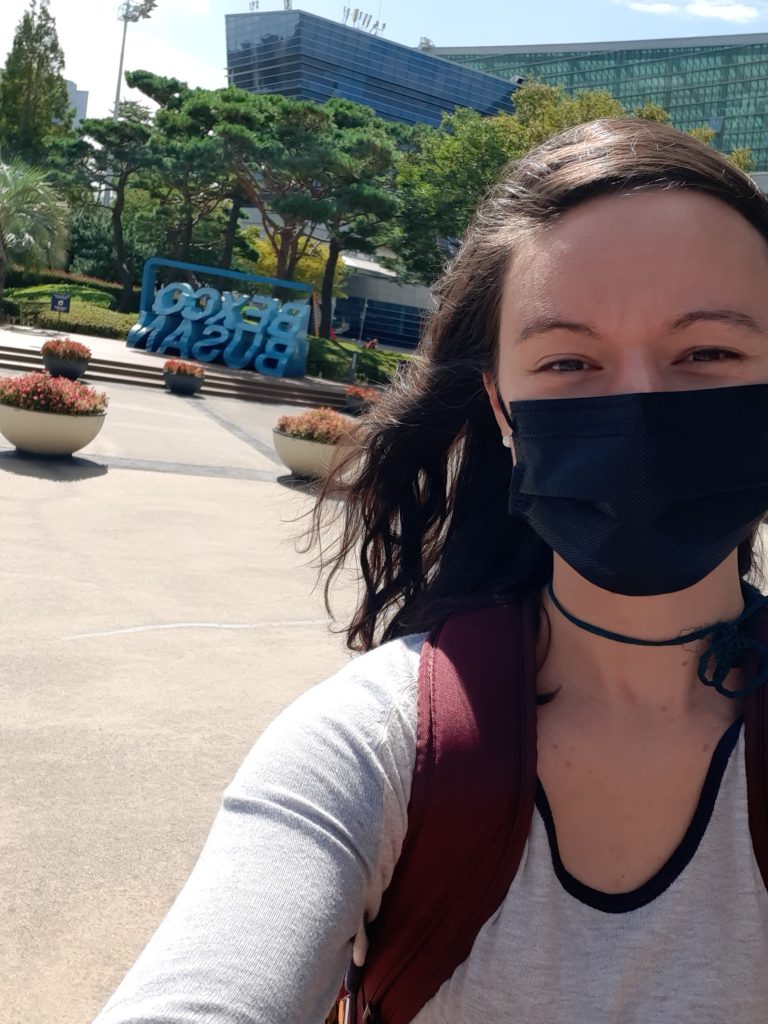
The Conference Experience
The conference is designed to inform participants of the latest research and practices related to marine litter, connect professionals and practitioners from around the world to facilitate strong networks and the exchange of ideas, and inspire participants by attending sessions, exhibits, field trips, and more!
In the average day, 6 presentations were held simultaneously, amounting to over 125 presentations over the course of the day. Hundreds of posters were also on display throughout the 5-day conference. The wealth of information was endless and energizing!
I enjoyed connecting with and learning from the perspective of marine debris professionals, grassroots organizers, and researchers of a wide variety of ages, nationalities, and professional backgrounds.
The presentations that captivated me most included lessons on citizen science marine debris monitoring, grassroots efforts that empowered passionate volunteers to steward their communities, studies investigating the breakdown and toxicity of plastics, and discussions about the upcoming global plastics treaty. I included details from three of these topics below so you can learn too!
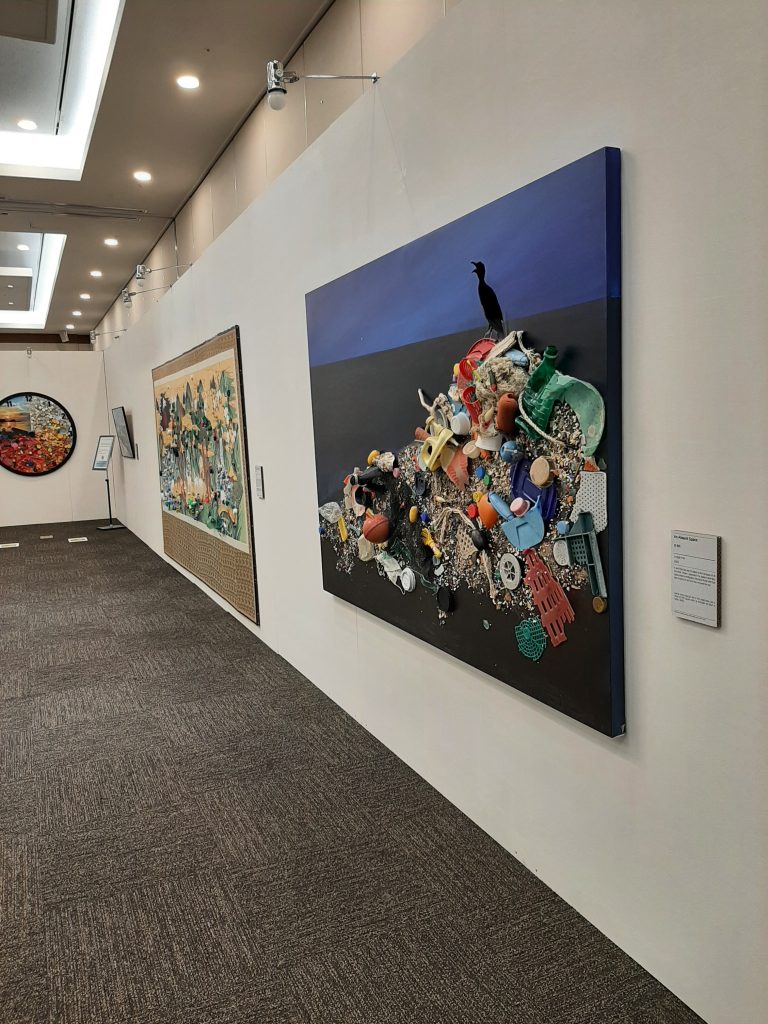
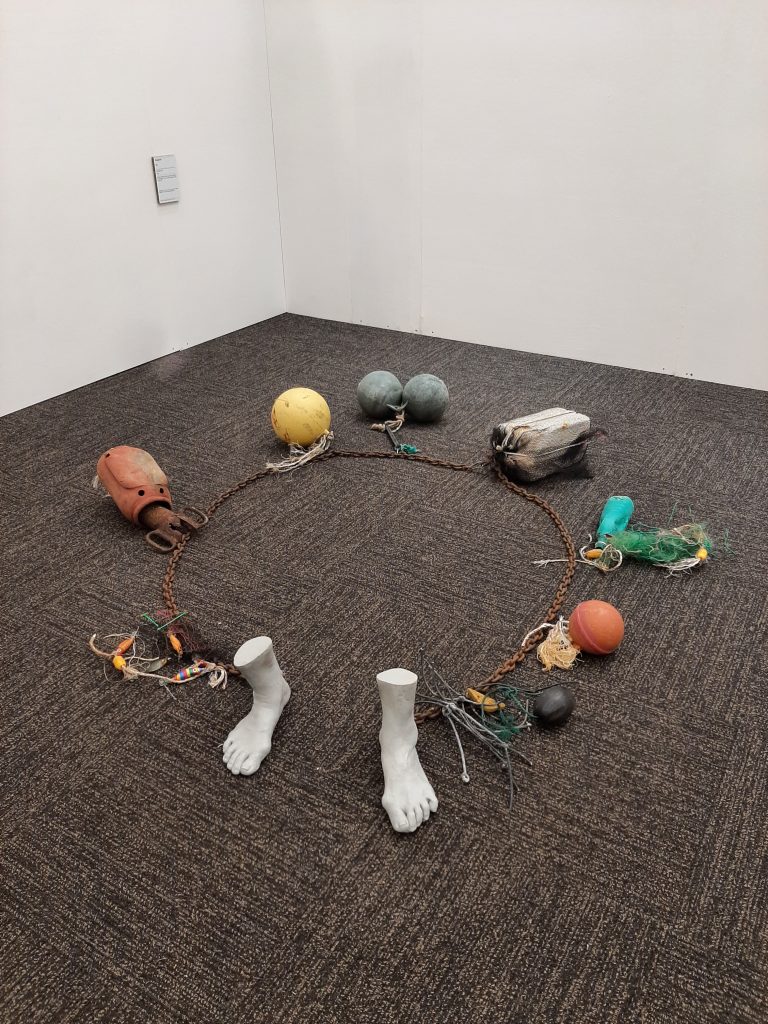
On the Horizon: A Plastics Treaty
At a panel discussion about the Global Treaty on Plastics Pollution, professionals from various backgrounds shared the many components they feel are most important. Negotiations for this treaty will begin in November of 2022. According to the panelists, a successful plastics treaty should…
- Be ambitious in efforts to protect human health. Plastics pose health risks to humans, many known and others still being uncovered, particularly those living in developing and underprivileged areas.
- Address impacts of the full lifecycle of plastics from production to distribution to use to disposal.
- Utilize upstream approaches that stop plastic problems at the source.
- Tease out and address the most harmful polymers over time. While we know much about the toxicity of plastics, new information is constantly uncovered about formulas used by industry and their toxic effects.
- Include dedicated programs of work to address specific industries, such as agriculture, fishing gear, etc.
- Provide accessible means of implementation for developing countries.
- Include solid negotiation trainings for those who feel they could benefit.
- Include mechanisms to hold nations accountable for their commitments, while remaining flexible enough to remain accessible and attractive to unify as many nations as possible in the agreement.
- And more.
Grassroots Repurposing
I also attended presentations by community leaders who organized recycling and repurposing programs. Community members, who often had few employment opportunities, were organized to collect, sort, and repurpose debris found in nature to create art and functional items they could use or sell in a shop. Speakers shared lessons learned in developing these programs.
Afterward, a young, passionate speaker asked an important thought-provoking question. Throughout the conference, participants and presenters agreed that recycling is not the answer to marine debris and plastics problems; prevention of marine debris is the ultimate solution. The student drew on this theme, asking why should we design recycling and repurposing programs to employ individuals if our end goal is to have no litter? Why are we training people to recycle and repurpose if someday there might not be any materials to sustain their craft?
A speaker explained that in her community in Mexico, a robust municipal waste management system was implemented after she started her recycling and training programs. This resulted in less litter available to make crafts, however, the trained individuals were not out of a job. These individuals who invested their time in learning how to collect, sort, repurpose and hone their trade often moved up to new roles, typically within waste management. Some have opted to seize opportunities to move into office jobs rather than doing physical labor. Some are in leadership positions because they got their start in repurposing litter.
A responsible, holistic repurposing program should aim for this growth. Creating jobs by repurposing debris is an asset to any community. However, these programs can be socioeconomically sustainable only if they keep the end goal in mind for the individuals, creating opportunities to move into new roles when the debris is stopped at the source.
Marine Debris & Performance Art
Some of you may know that I have been involved in dance throughout my life. This made me very interested in a series of presentations highlighting marine debris performance art.
Erika Hughes from the University of Portsmouth in England hoped to create drama in response to plastic pollution and appeal to emotions instead of beauty by creating Plastic Monsters. Erika created three wearable suits made of marine debris to wear in a variety of public settings to bring attention to industry’s contribution and encourage individuals to think about how their lifestyle contributes to marine debris. The suits were worn in public spaces, including a street and the COP26 climate summit. Another presenter also developed marine debris-related songs to help kids connect with how marine life are affected.
Presentations in this session also explored environmentally-minded stage performances. One presentation explored a term new to me, ecoscenography. Ecoscenography involves staging a show with the environment in mind, reusing materials, reducing plastic usage, and reducing overall waste. Another presenter explained her microplastics science stage performance. She and her colleagues performed microplastics sampling and sorting procedures while piles of plastic pieces slowly piled up on the sides of the stage to represent microplastics accumulation in the environment.
A former dancer and current attorney working for NOAA in Alaska named Alisha Falberg entered a costume building and performance contest to tell a story about ghost gear. She created a suit constructed completely out of ghost gear including nets, buoys, pieces of lobster traps, and fishing line. Ghost gear is fishing gear that has come loose and no longer serves its original purpose, but threatens wildlife through entanglement. On competition day, she laboriously trudged and across the stage in the heavy costume struggling to reach the end, symbolizing the stress fishing gear puts on marine life when entangled.
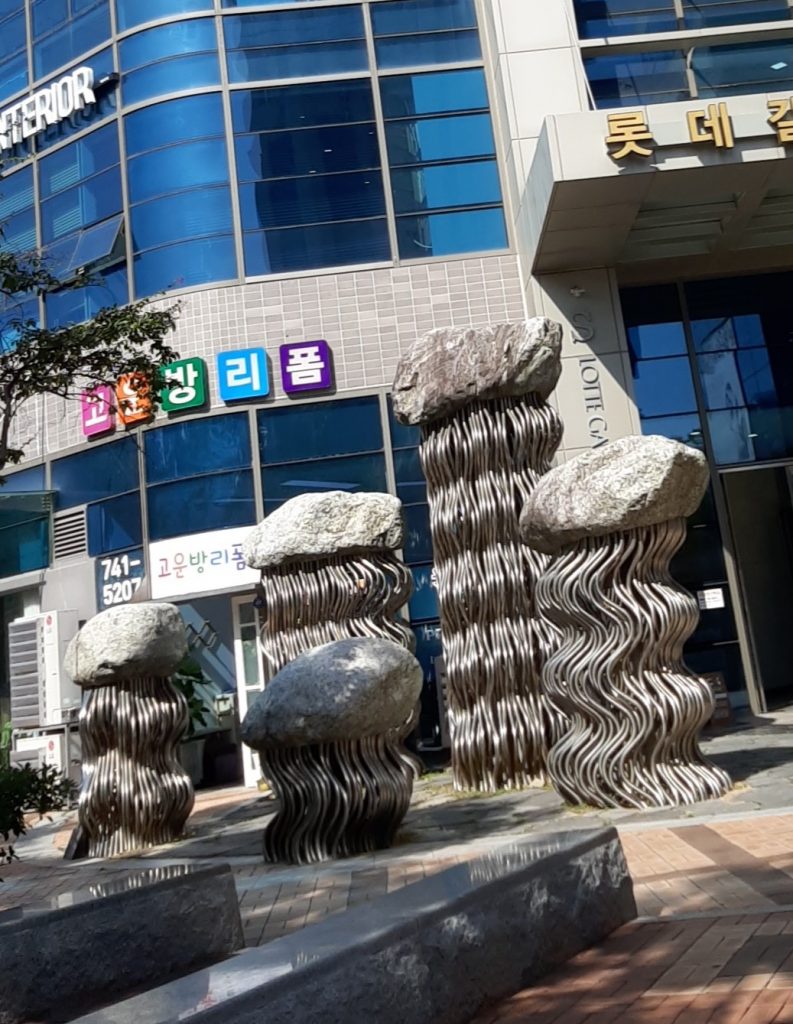
My Presentation
I presented our variety of approaches for community science marine debris monitoring utilized over 20 years to educate public audiences and engage a diverse and hard-working volunteer network. These cleanup types include private beach cleanups, DIY beach cleanups, public cleanups, and Adopt-A-Beach program.
I spoke about lessons we have learned over 20 years of cleaning beaches with these approaches, as well as the positives and negatives of data collection using a variety of methods, including the Marine Debris Tracker app. I enjoyed using my presentation to contribute to conversations surrounding sustainable community science monitoring and best practices regarding debris monitoring apps, public education, and volunteer engagement.
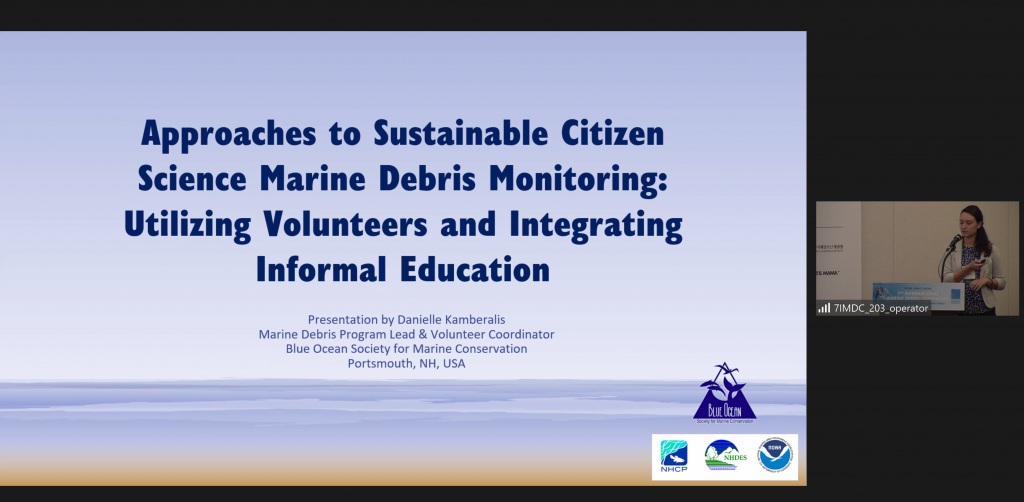
I also wanted to acknowledge that beach cleanups are not the true solution to the marine debris issue. I explained how BOS integrates informal education into each cleanup through marine debris storytelling, turning a cleanup into an opportunity to point to the true solution: turning off the tap on plastic and marine debris. I had great conversations throughout the conference with attendees about marine debris storytelling and its capacity to increase understanding and motivate behavior change.
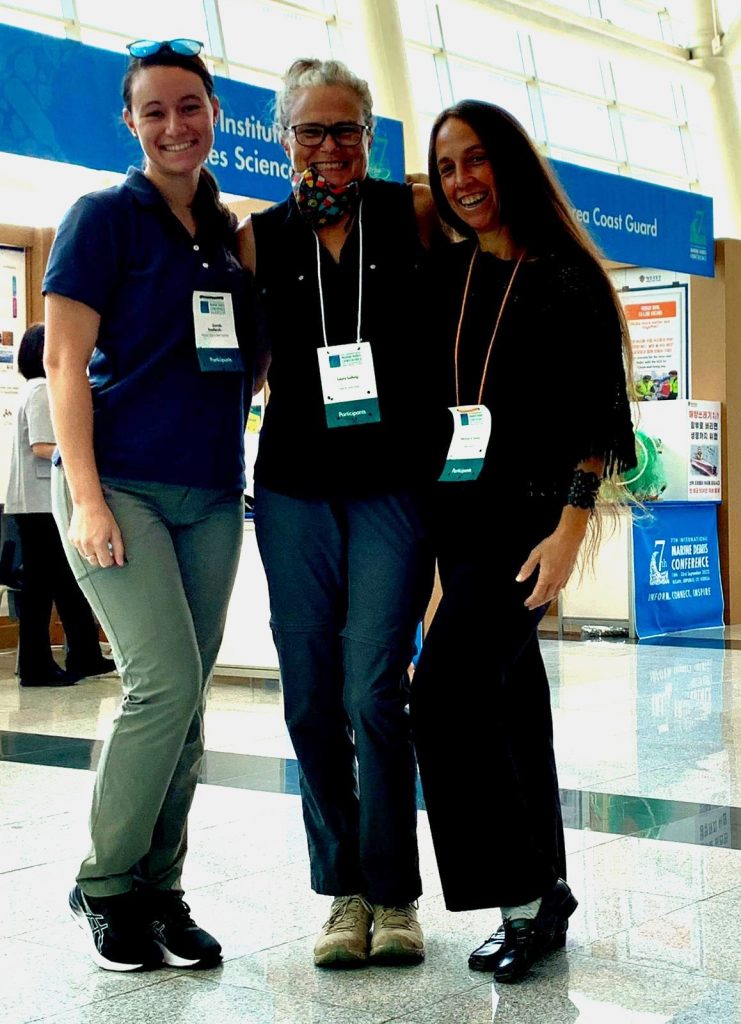
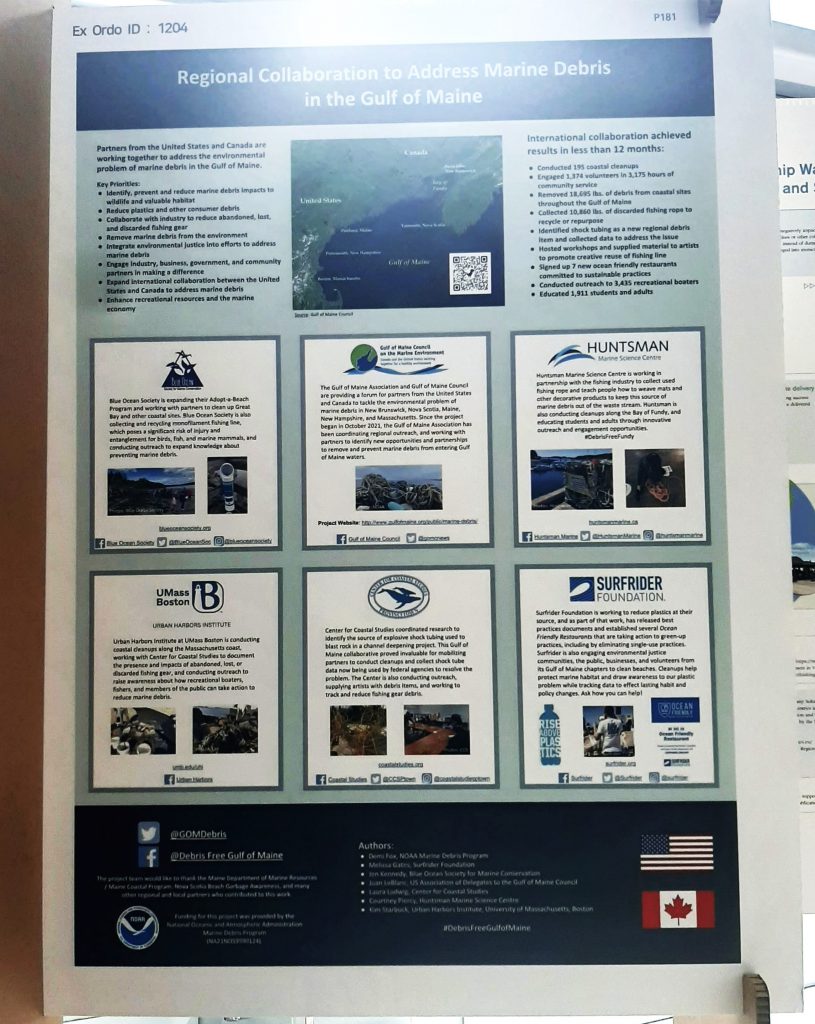
Sustainability of the Conference
The conference organizers did a great job in maintaining zero waste practices throughout the conference, or as close to zero waste as possible. No swag was given out at any table or vendor. Gifts given to participants included a reusable metal tumbler to use for beverages during the conference and a silk hand towel. Covid tests and fireworks aboard a dinner cruise were the only single-use items I noticed during the conference. Flatware and dishware used during meals and coffee breaks was reusable or compostable and made from plant fibers.
International Coastal Cleanup in Korea
The Ocean Conservancy, that coordinates the International Coastal Cleanup, worked with the conference organizers to plan a local beach cleanup for conference participants. What a great experience to clean a beach amongst others who are passionate about marine debris! Unlike what I find on the New England coast, the majority of the trash was in the water. Many of us rolled up our pants and fished litter out of the sea. The trash I pulled out of the water was mostly plastic food wrappers with both English and Korean labels and scraps of fabric of all different colors and textures.
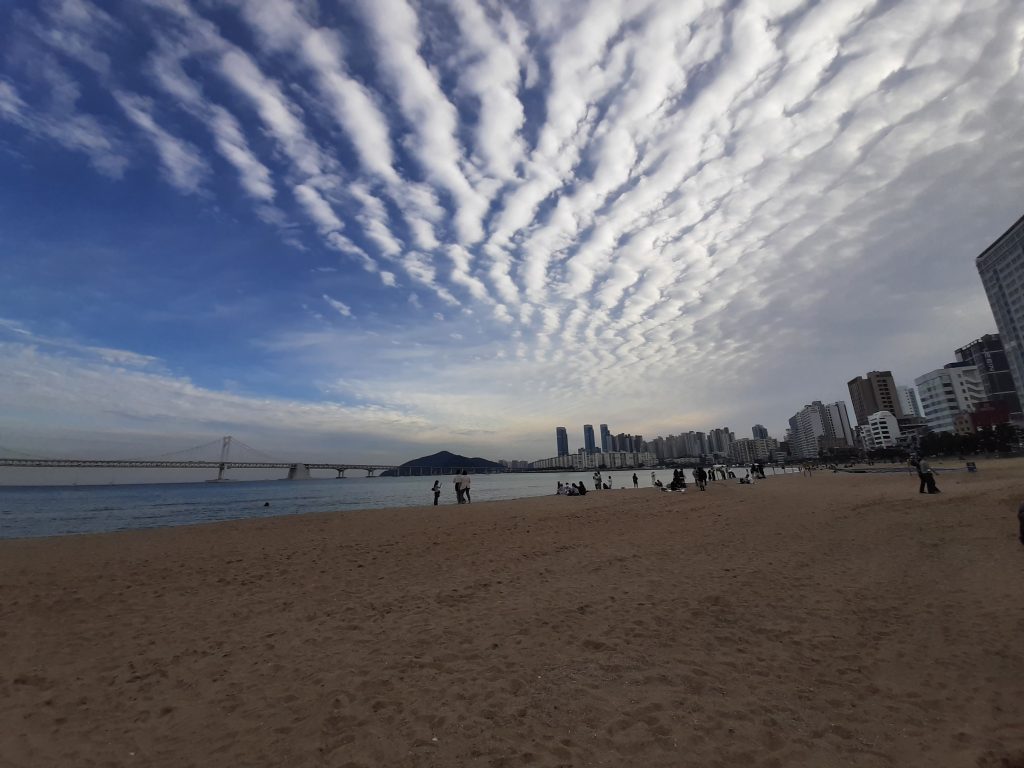
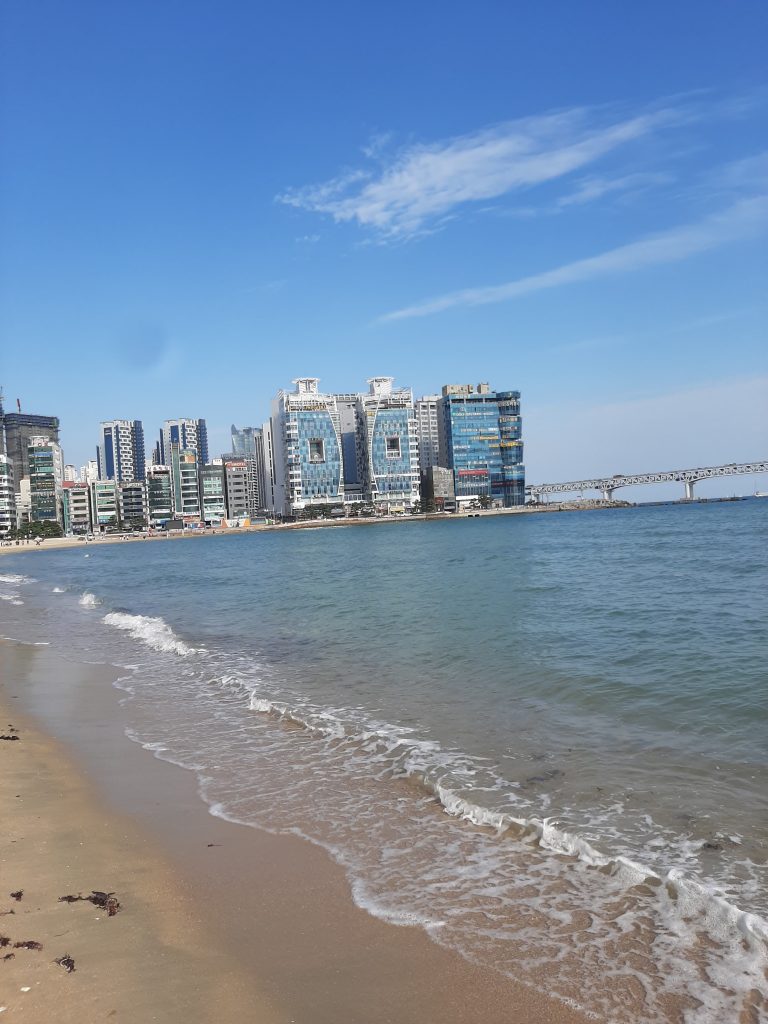
Overall, the conference was an enriching and wonderful experience where I connected with so many great, hardworking, innovative, knowledgeable people to exchange ideas and perspectives. I did not expect this, but it was so lovely to meet so many people who collect and store trash in their pockets like I do!
Other Adventures in South Korea
Field Trip: Busan Coast Guard & Huinnyeoul Culture Village
The 7IMDC conference organized guided field trips so that we could experience Busan’s culture. At the Busan Coast Guard Station, my group was able to board and explore a Busan Coast Guard police boat.
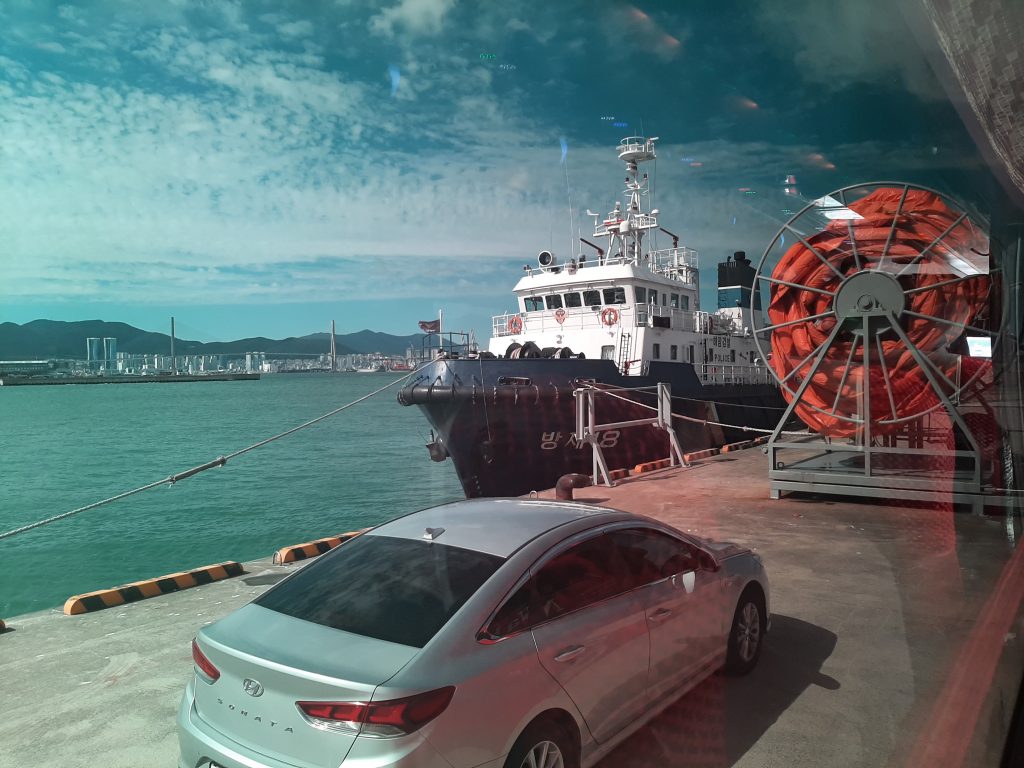
Huinnyeoul Culture Village is a historically significant location in Busan with beautiful waterfront views. Historically, people fled to this village when Japan invaded as it is on the outskirts of Korea. It is no longer as densely populated as it once was.
Today, the majority of the population in the village is elderly and the city is trying to incentivize young people to move there. Cute cafes and homes are nestled tightly into the picturesque cliffs, making the village sometimes referred to as Korea’s Santorini. It is a beautiful, coastal retirement village!
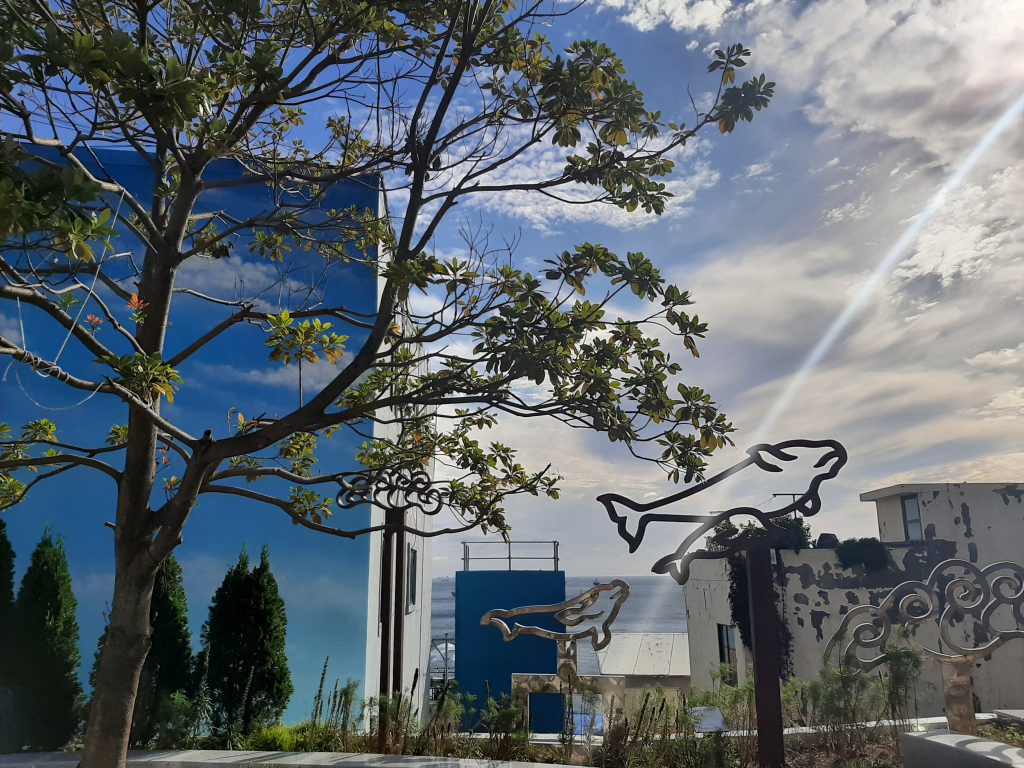
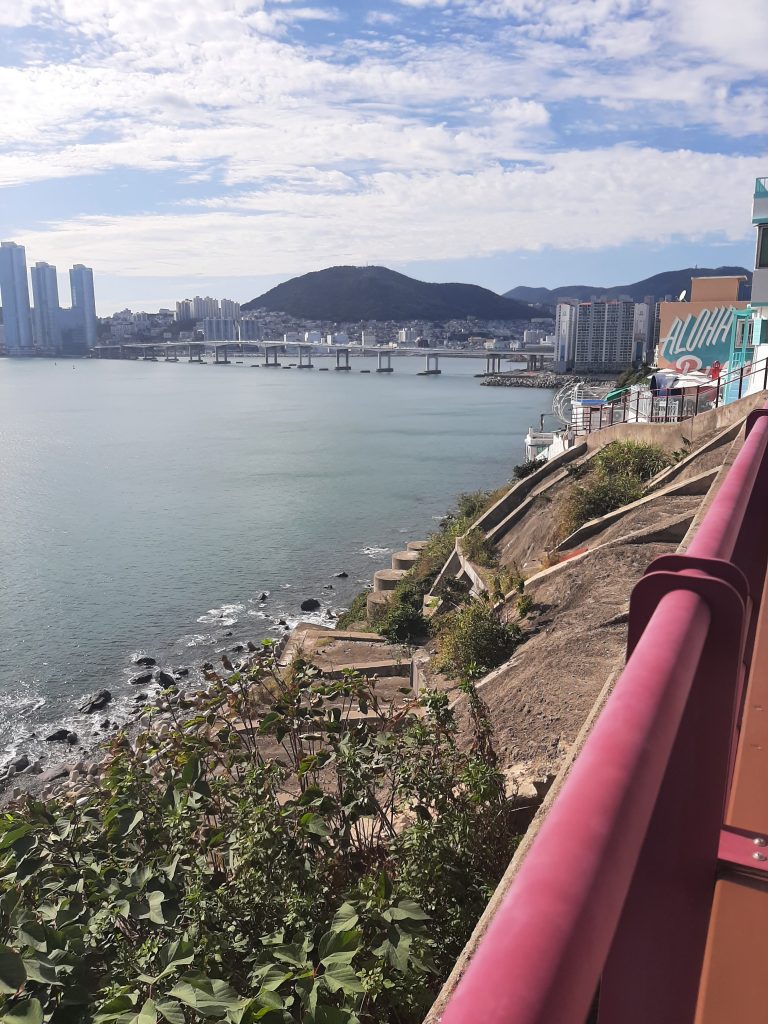
Exploring Seoul
After the conference, I traveled around Korea’s largest city of Seoul for two days with a friend before returning to the states. Check out the sights of Seoul below, including my visit to Gyeongbokgung Palace, featuring Korean architecture built in 1395.
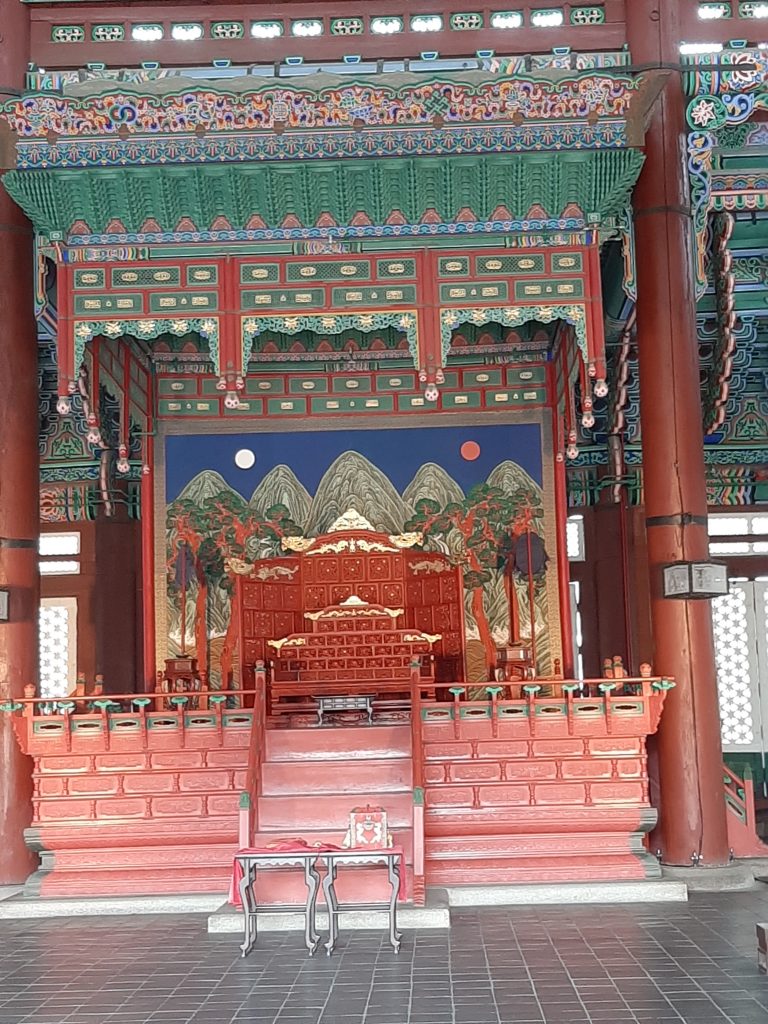
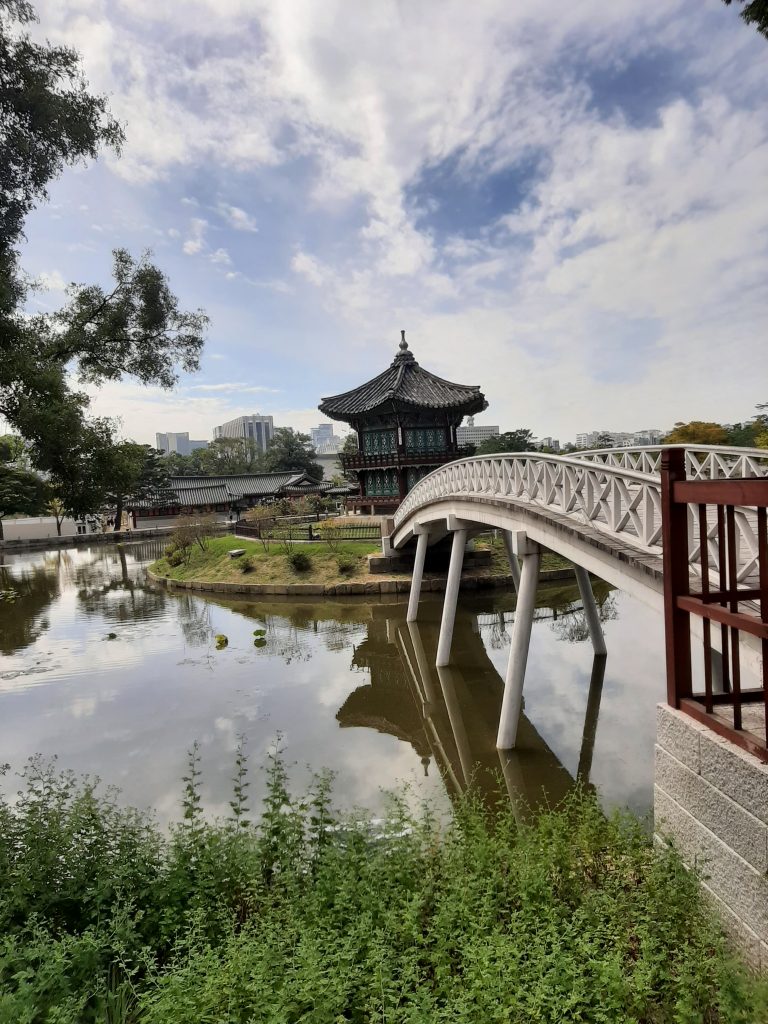
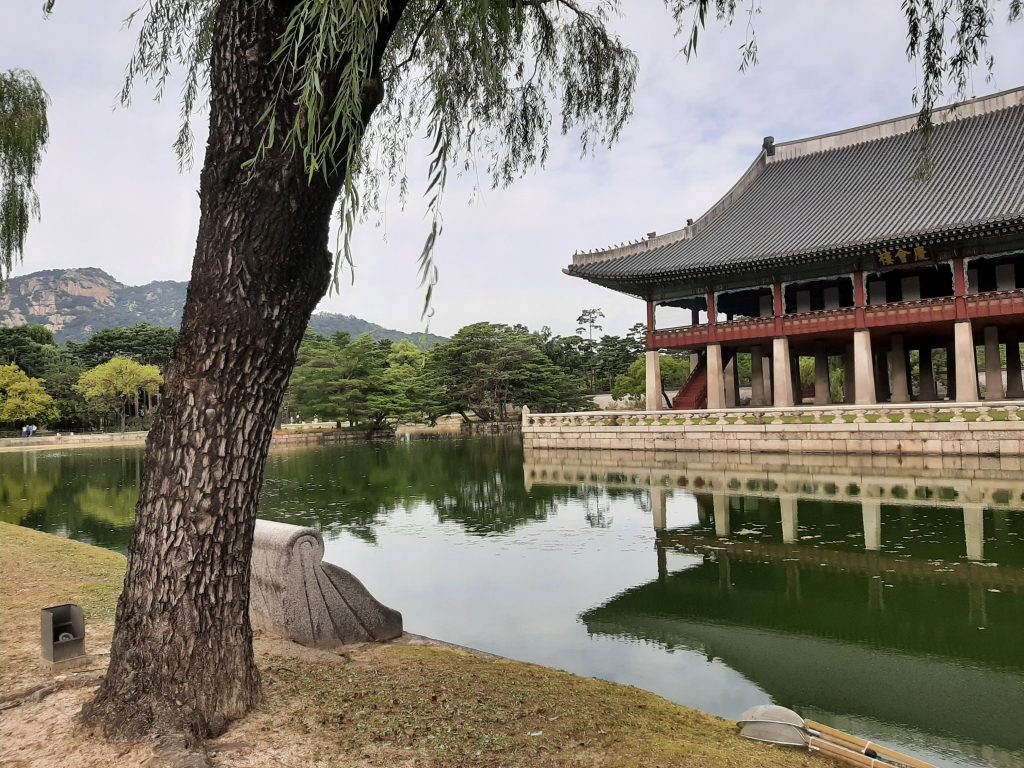
The palace included beautiful gardens and about ten historic structures, some used to house Korean royals, members of the army, and household help.
Tasty Treats
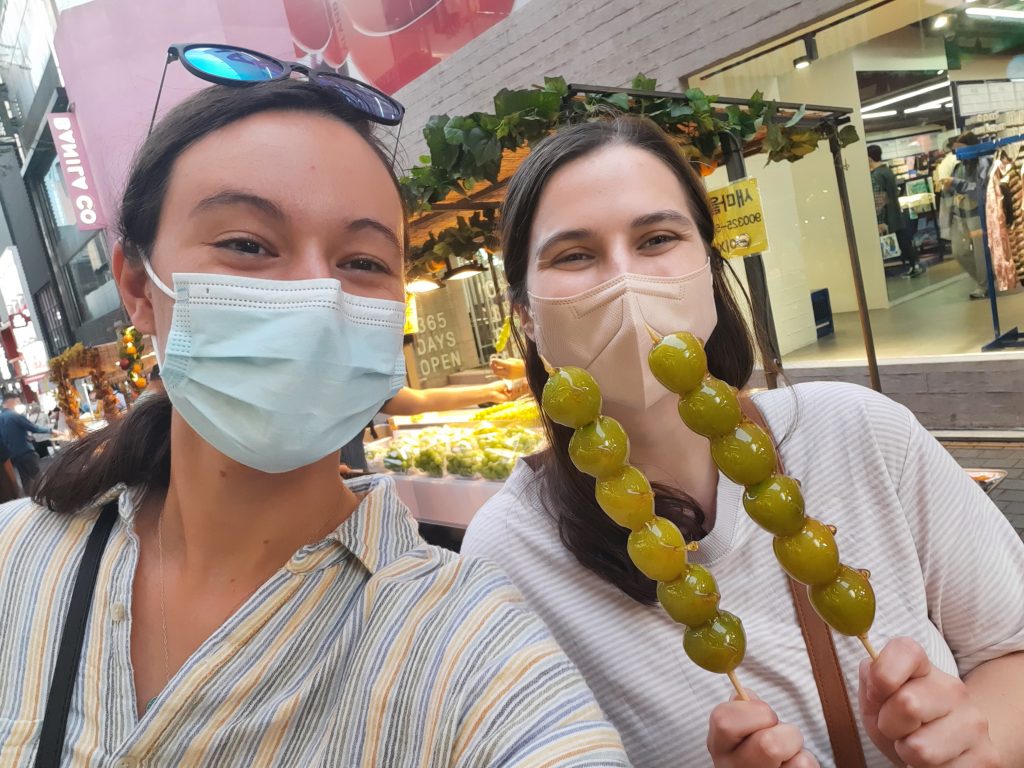
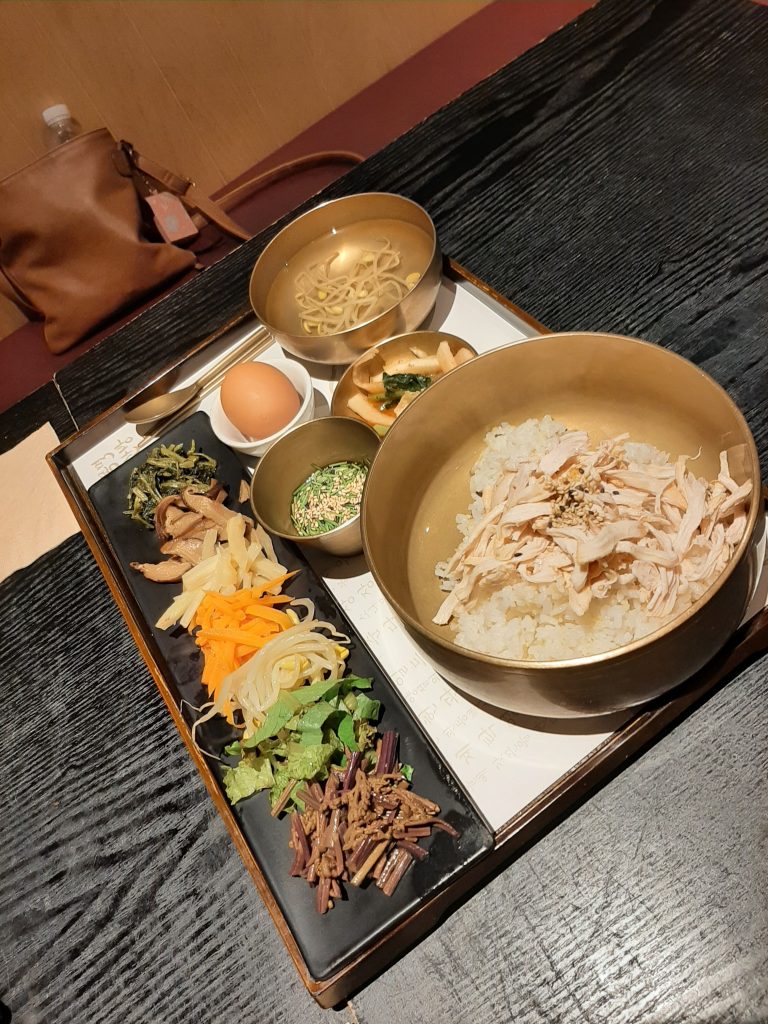
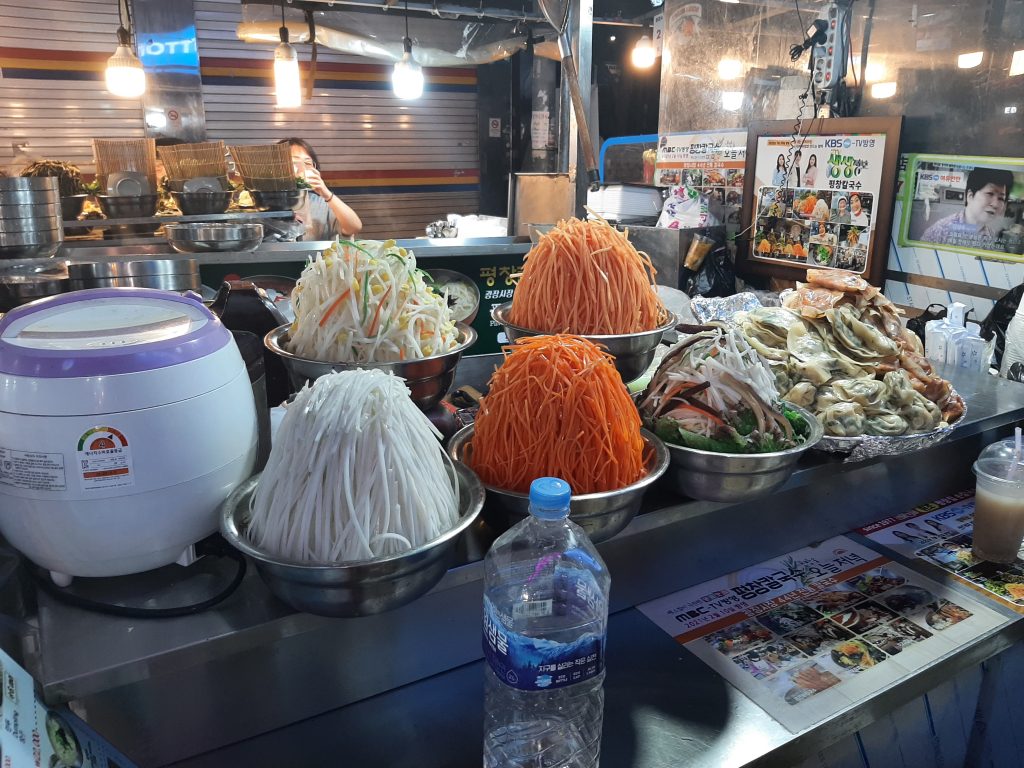
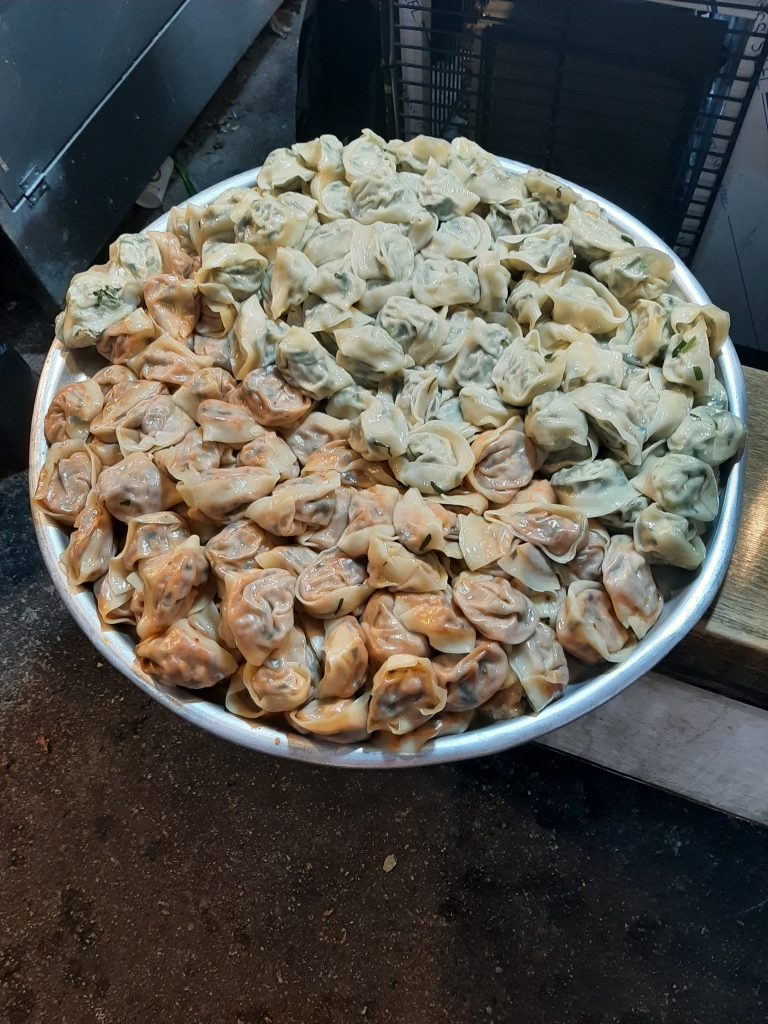
My travels to Korea for the conference and cultural exploration were such enriching experiences! I plan to go back to Korea someday and explore more coastline and culture. Koreans do not travel much typically, so foreigners occasionally get confused looks especially from rural folks. However, every Korean I asked for help was courteous and kind, and I felt very safe as a solo traveler, even in the city. I suggest you take a trip someday!
Join us Thursday, November 10 for a presentation about this conference. Click here to sign up.
Check out these resources!
- Read the 2021 results of our marine debris community science project that I presented
- Adopt a beach for a year
- Learn more about the 7IMDC
Thanks for reading!

